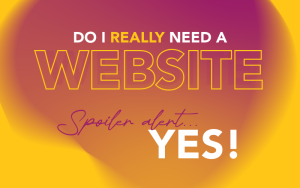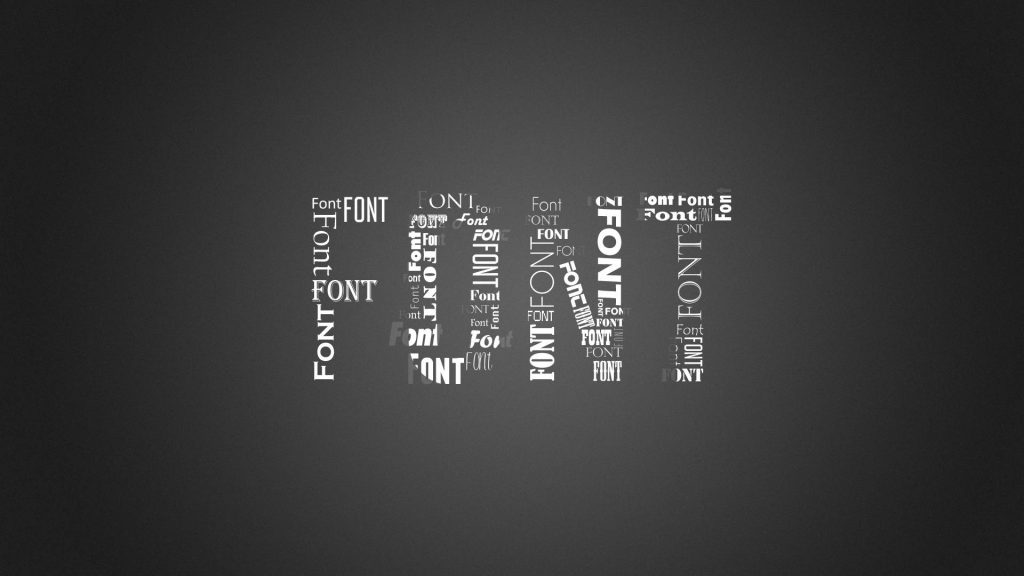
Do I Really Need a Website? (Spoiler Alert: Yes!)
Let’s address the big question I get asked all the time: “Do I really need a website?” The short answer: Absolutely. But here’s the deal—if

Let’s talk about fonts – they are the spirit that gives life to a design, giving it character, style, and personality. Sadly, not all fonts are created equal. Some are totally free to use, while others require a license for commercial use. In this post, we’re gonna chat about the different types of fonts and font licenses and what you need to know when using them for your business and brand.
Let’s get into it!
Let’s start with the freebies. Everyone likes FREE! Free fonts are like the colorful playgrounds of the design world – there are LOADS of free fonts out there just waiting to be discovered! You can download and use them for personal and commercial projects without the need for a license. They’re often created by independent designers or foundries who want to show off their skills. But, be careful, because free fonts aren’t always the best quality and they still might not be legally safe for commercial use.
These fonts require a license for commercial use, meaning you have to purchase a license from the font foundry (a company that designs or distributes typefaces) or distributor. The cost of a commercial font license can vary depending on the font, the foundry, and the intended use. But, depending on your business, investing in a high-quality commercial font could be worth it for your branding and marketing efforts.
When using a commercial font keep in mind these 3 super important guidelines:
Open-source Fonts
Open-source fonts. The cool kids on the block! These fonts are created by a community of designers and developers who work together to create high-quality fonts that are accessible to everyone. They’re also FREE to use, but keep in mind… they may not have the same level of quality control and support as commercial fonts, and it’s always a good idea to review the license terms to ensure proper usage.
Fonts are serious business, but they can be fun and playful too. When it comes to choosing the perfect font for your business, consider these things:
How do you know if you need a license for that awesome font you found for your branding? That’s a great question! Don’t worry! I’ve got some tips to help you figure it out:
To sum it up, it’s essential for businesses to understand and follow font licensing requirements to avoid any legal issues. By checking the font license, talking to a lawyer, researching the font foundry, or using free fonts, you can ensure that you’re using fonts in a legal and responsible way.
The heavy. Let’s talk about legal ramifications businesses could face if they improperly use fonts. Using a font without the proper license can result in some serious legal issues.
Customers may lose trust in a business that engages in copyright infringement, and the business may face negative publicity as a result, which could lead to a loss of business. No thanks!
To avoid legal issues and protect your reputation, businesses need to take font licensing seriously. It’s important to read and understand the terms of the font license agreement and make sure that the font is properly licensed before using it in any commercial project. By doing so, you can create awesome designs that are both legally compliant and visually appealing.

Let’s address the big question I get asked all the time: “Do I really need a website?” The short answer: Absolutely. But here’s the deal—if

Paired next to my irrational fear that I’d end up 16 & pregnant (thanks MTV)… I’ve always had this fear that I’d end up in

Our very own Steph Hilfer recently spoke with Smart Real Estate Coach’s Chris Prefontaine about personal branding. It’s not every day you get invited to

I was so excited to be a guest on the Goals to Results podcast with host Dennis Riley! The episode is now available! Check it